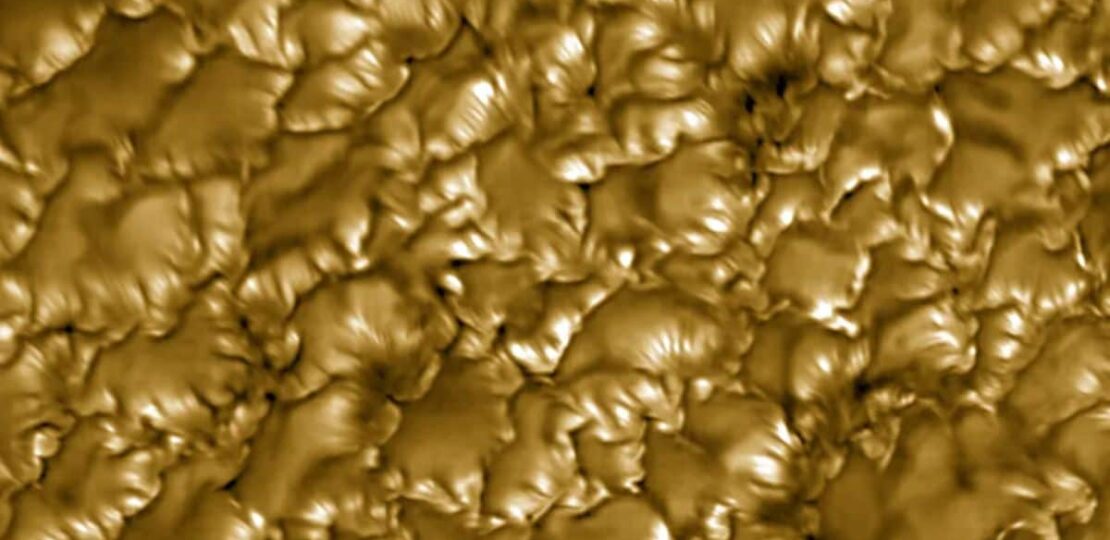NSF’s DKIST Captures Sharpest-Ever Images of Fine Solar Magnetic Striations
June 18, 2025 | by Admin

In a new study using the NSF’s Daniel K. Inouye Solar Telescope (DKIST), scientists captured the sharpest-ever views of the Sun’s surface, revealing ultra-narrow bright and dark “striations” only ~20 kilometers wide. These striations – alternating light and dark bands on the walls of solar granules – arise from tiny fluctuations in the magnetic field, tracing the Sun’s magnetism. DKIST’s unmatched 4-meter mirror achieved ~0.03″ (~20 km) resolution – roughly the length of Manhattan Island – unveiling a new layer of complexity in solar magnetic structure. Lead author Dr. David Kuridze calls them “the fingerprints of fine-scale magnetic field variations”.
Ultra-Fine Striations on the Solar Photosphere
According to the study, using DKIST’s Visible Broadband Imager (VBI) in the G-band (430 nm), researchers captured fine stripes at ~0.03″ (~20 km) resolution. The images show alternating bright and dark bands on solar granule walls, each 20–50 km across. These patterns come from thin, curtain-like sheets of magnetic field rippling across the granule walls.
As Kuridze explains, stronger fields yield bright lanes and weaker fields dark lanes. Models show that ~100 gauss of field variation can create slight density dips (Wilson depressions) a few kilometers deep in the photosphere. At this fine scale, Kuridze notes, the striations are literally “the fingerprints of fine-scale magnetic field variations”.
Implications for Solar Magnetism and Space Weather
Mapping this fine-scale magnetic architecture is crucial for understanding solar storms. Tiny surface fields can seed flares, eruptions and coronal mass ejections – events that drive space weather – so resolving them improves space weather forecasting. NSO co-author Dr. Han Uitenbroek points out that similar magnetically induced stripes have been seen in distant molecular clouds, highlighting the universal significance of this phenomenon.
With its 4-meter aperture – the world’s largest solar telescope – DKIST was built to probe solar magnetism. Observers hail this discovery as “one of many firsts” for Inouye, underscoring DKIST’s unique power to reveal the small-scale magnetic physics that drive space weather. DKIST was designed to resolve these fine magnetic features.
RELATED POSTS
View all


